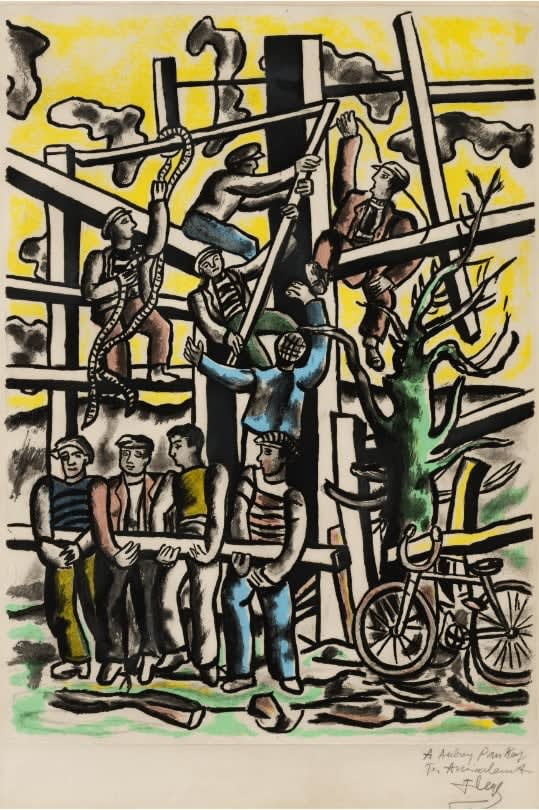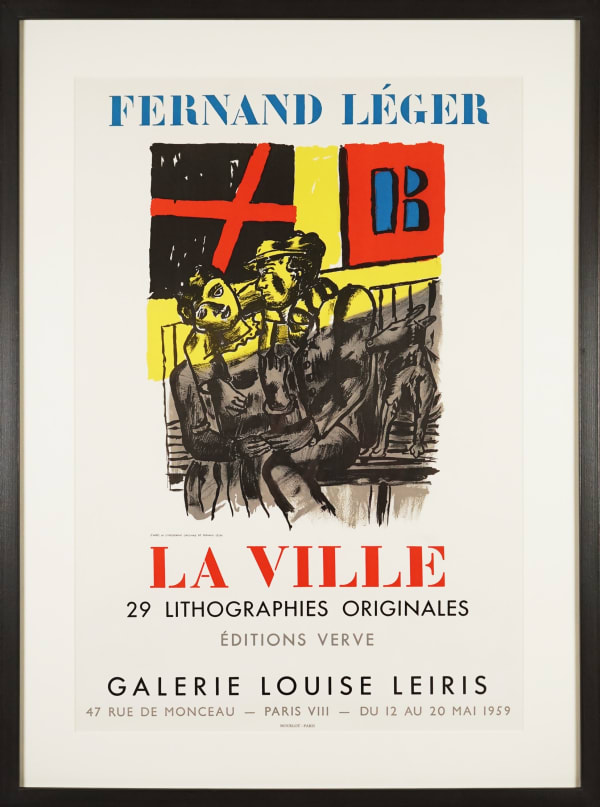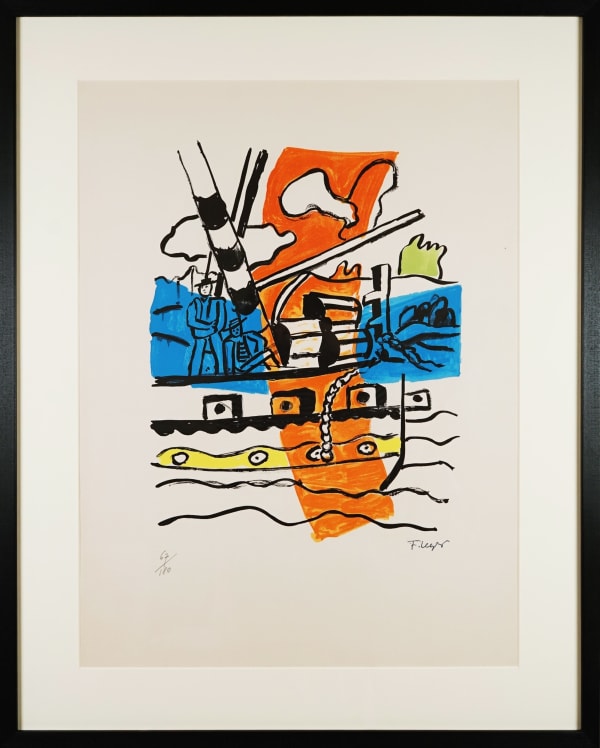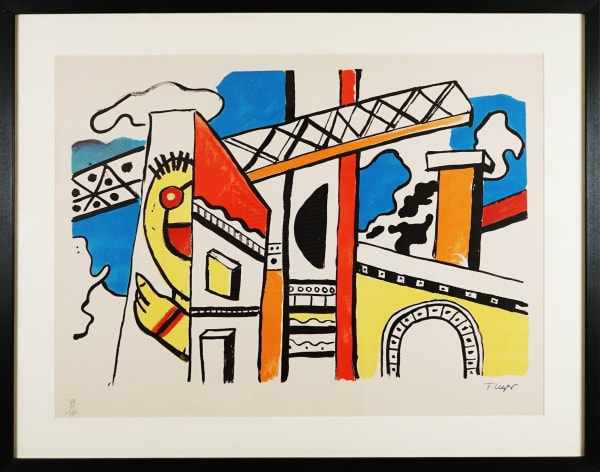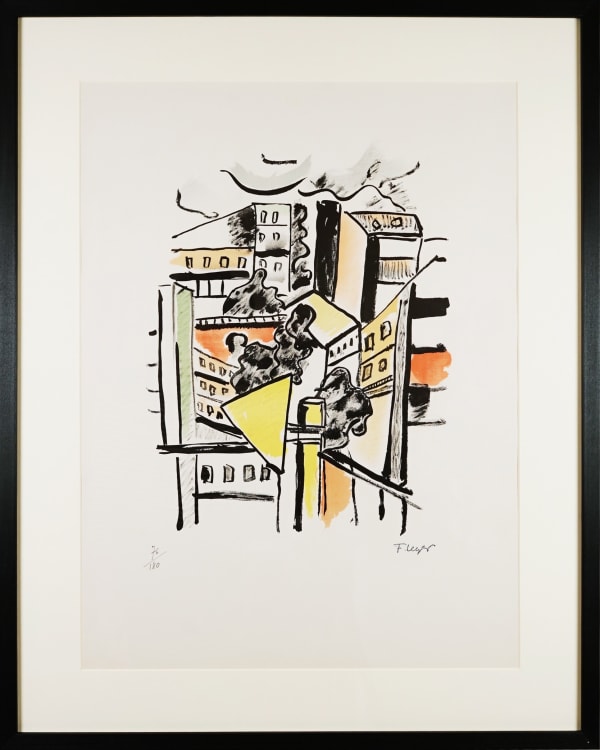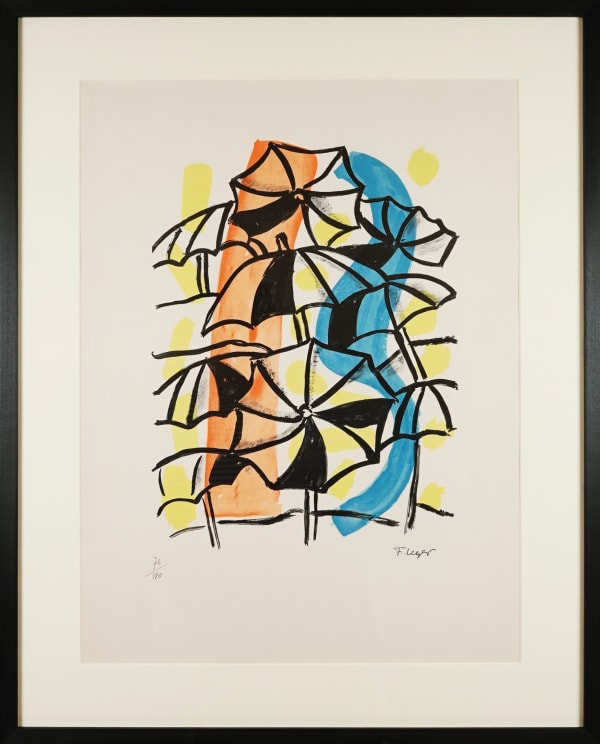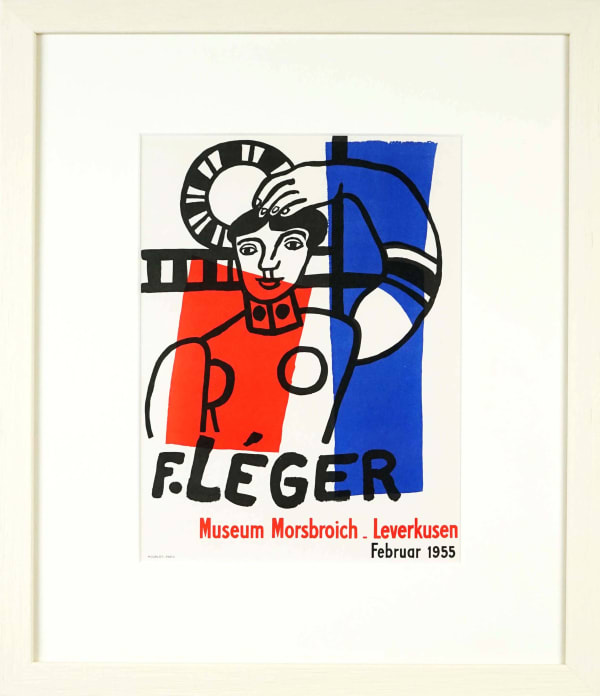Fernand Léger
"Man needs colour to live; it's just as necessary an element as fire and water."
Fernand Leger (1881-1955) was a French painter, sculptor, and filmmaker. In his early works he created a personal form of cubism, which he gradually modified into a more figurative, populist style. His boldly simplified treatment of modern subject matter has caused him to be regarded as a forerunner of pop art.
Raised in a familly of cattle farmers, Léger demonstrated an aptitude for art from a young age, and initially trained as an architect. He did not embark upon a serious career as a painter until the age of twenty-five, and little of his early work survives. An encounter with the work of Paul Cézanne at the Salon d'Automne in 1907 would prove to be a critical turning point in his evolution as an artist.
Léger swiftly assimilated the implications of cubism, and in 1911 his work was hung at the Salon des Indépendants in the same room as artists such as Jean Metzinger and Robert Delaunay. This was the first time that cubism had been introduced to the general public; although Picasso and Braque has pioneered the style several years earlier, they chose to exhibit their work privately among a select circle of collectors, so it was through artists such as Léger that the movement first achieved wider exposure.
In the years before the First World War, Léger's work became increasingly abstract, but his mobilisation for military service in August 1914 would prove to be a point of departure in his development. He explained this revelation thus: "...I was stunned by the sight of the breech of a 75 millimeter in the sunlight. It was the magic of light on the white metal. That's all it took for me to forget the abstract art of 1912–1913. The crudeness, variety, humor, and downright perfection of certain men around me, their precise sense of utilitarian reality and its application in the midst of the life-and-death drama we were in ... made me want to paint in slang with all its colour and mobility." This epiphany would lead to Léger's work embracing a more mechanical aesthetic, wth his figures and objects defined by sleek, tubular forms.
Léger's work continued to evolve into the 1930s. He taught at the Sorbonne in 1931 and was the subject of an exhibition at the Museum of Modern Art in 1935. Exiled to the United States during the Second World War, he taught at the Mills College Art Museum in Oakland, California between 1940 and 1945. His use of colour become more experimental, a development that he attributed to his experiences in New York: "I was struck by the neon advertisements flashing all over Broadway. You are there, you talk to someone, and all of a sudden he turns blue. Then the colour fades - another one comes and turns him red or yellow."
After his return to France in 1945, Léger's work became less abstract, and he concentrated on making work that could be enjoyed and appreciated by as wide an audience as possible. He had joined the French Communist Party, and sought to forge a connection with the working class. Producing images of everyday life such as builders, circus performers and outings to the countryside, he even installed a series of his paintings in the Renault factory canteen for the workers to examine during their lunch breaks. These works are among his most iconic.
-
 Les Constructeurs, 1953£ 7,250.00View more details
Les Constructeurs, 1953£ 7,250.00View more details -
 Profil à la boule rouge (after Léger), 1956£ 2,950.00View more details
Profil à la boule rouge (after Léger), 1956£ 2,950.00View more details -
 The Inkwell, 1933£ 2,950.00View more details
The Inkwell, 1933£ 2,950.00View more details -
 La Ville: La Marchande d'Oiseaux, 1959£ 1,950.00View more details
La Ville: La Marchande d'Oiseaux, 1959£ 1,950.00View more details -
 La Ville: La Piscine, 1959£ 1,950.00View more details
La Ville: La Piscine, 1959£ 1,950.00View more details -
 La Ville: La Pompe à Essence, 1959£ 1,950.00View more details
La Ville: La Pompe à Essence, 1959£ 1,950.00View more details -
 La Ville: La Ruche, 1959£ 1,950.00View more details
La Ville: La Ruche, 1959£ 1,950.00View more details -
 Galerie Louise Leiris: La Ville, 1959£ 1,650.00View more details
Galerie Louise Leiris: La Ville, 1959£ 1,650.00View more details -
 La Ville: Le Remorqueur, 1959£ 1,350.00View more details
La Ville: Le Remorqueur, 1959£ 1,350.00View more details -
 La Ville: Le Viaduc, 1959£ 1,350.00View more details
La Ville: Le Viaduc, 1959£ 1,350.00View more details -
 La Ville: Les Toits, 1959£ 1,350.00View more details
La Ville: Les Toits, 1959£ 1,350.00View more details -
 La Ville: La Danseuse, 1959£ 1,350.00View more details
La Ville: La Danseuse, 1959£ 1,350.00View more details -
 La Ville: Les Parapluies, 1959£ 1,350.00View more details
La Ville: Les Parapluies, 1959£ 1,350.00View more details -
 Fernand Leger, Musée National D'art Moderne, 1959£ 350.00View more details
Fernand Leger, Musée National D'art Moderne, 1959£ 350.00View more details -
 Museum Morsbroich - Feb 1955, 1959£ 350.00View more details
Museum Morsbroich - Feb 1955, 1959£ 350.00View more details -
 Fernand Leger, Musée de Lyon 1955, 1959£ 350.00View more details
Fernand Leger, Musée de Lyon 1955, 1959£ 350.00View more details


